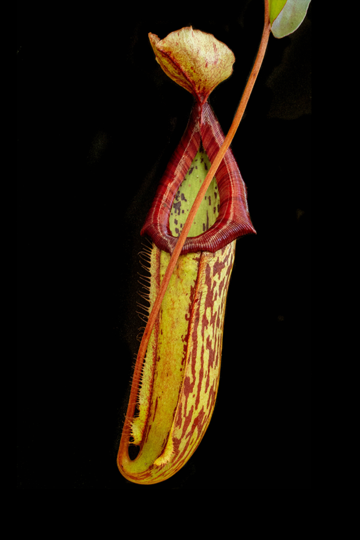We work in collaboration with physicists and mathematicians at the University of Manchester and University of North Carolina, and at the Mathematical Institute of the University of Oxford, to examine the functional and structural properties of carnivorous and aquatic plants.
Oxford Botanic Garden cultivates an extensive research collection of carnivorous Nepenthes pitcher plants under glass. Our work explores the functionality of the slippery surfaces of the Nepenthes pitcher, and its potential technological applications. Inspired by the plant, we have created artificial surfaces to explore the capability of trapping, retaining and directing the travel of liquid droplets. Our findings have revealed a potential mechanism for developing systems in which the transport of droplets is controlled by ‘energy railings’. These railings could provide a biomimetic means of transporting and sorting droplets in droplet-based fluidic devices and could enable the efficient mass transport of liquids along pre-determined pathways.
This work gives insight into the evolution of pitcher plants, showing that capillary action pins droplets to the parallel, water-infused grooves, and directs their transport in a controlled way. This indicates that the ‘pitfall’ trapping mechanism of Nepenthes is enhanced by the water-infused grooves on the slippery rim, driving prey into the trap in a way that is more tightly controlled than considered previously, by avoiding arbitrary slippage.
Our ongoing work seeks to compare Nepenthes peristome function and insect behaviour across species.

The Nepenthes pitcher plant trap.
Selected References:
Box F, Thorogood C, Hui Guan J, 2019. Guided droplet transport on synthetic slippery surfaces inspired by a pitcher plant. Journal of the Royal Society, Interface 16(158):20190323.